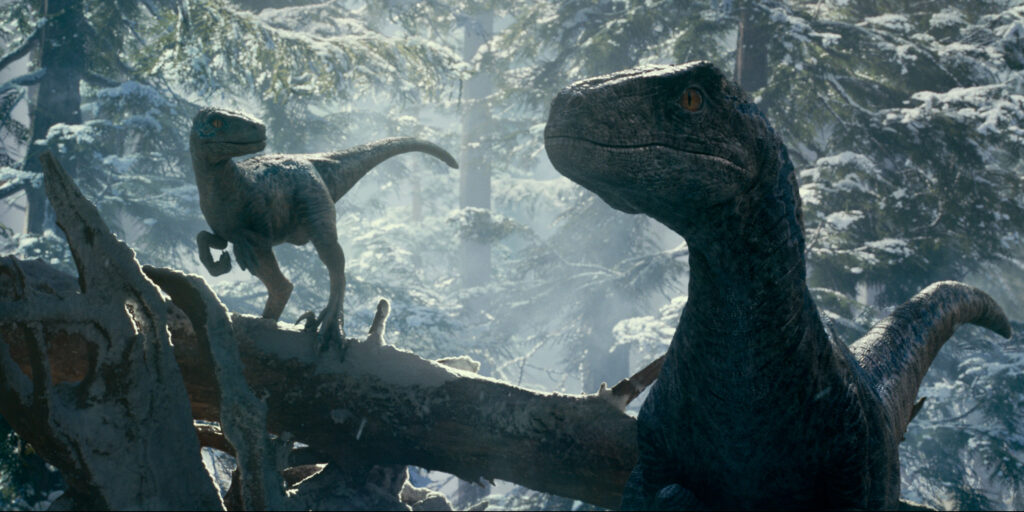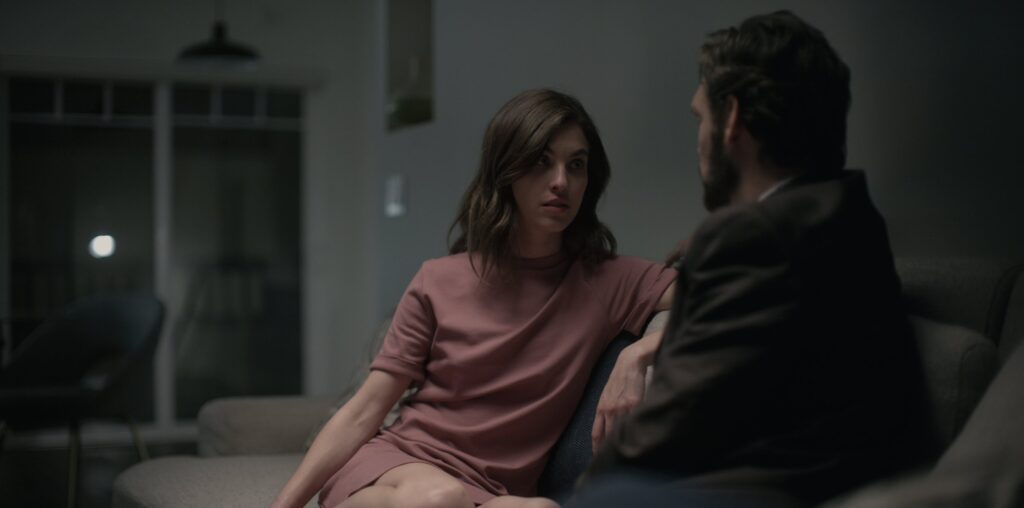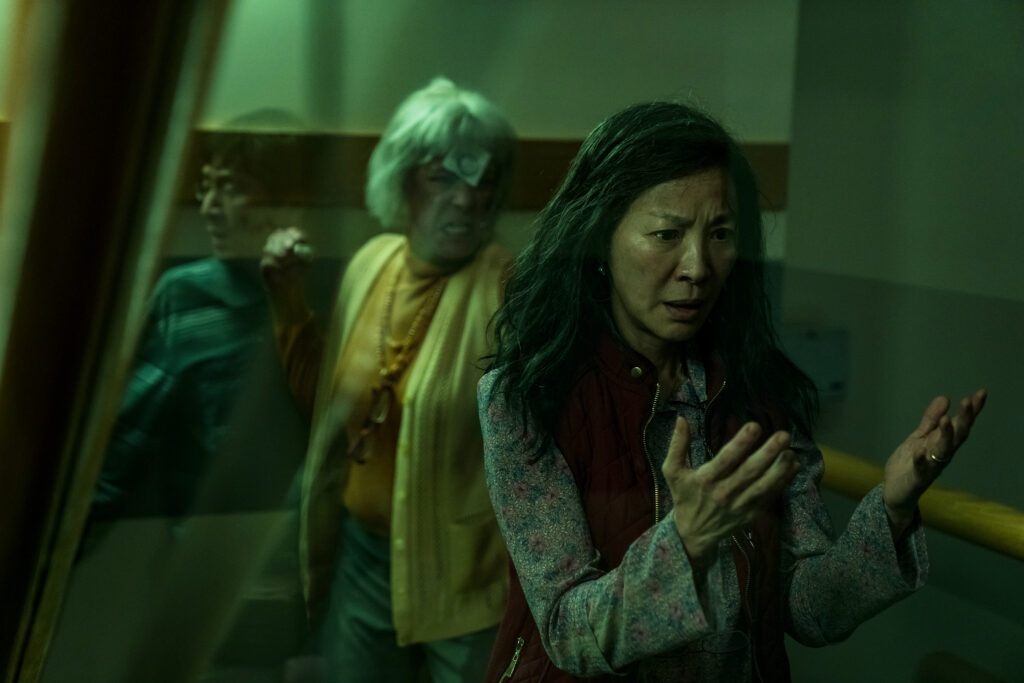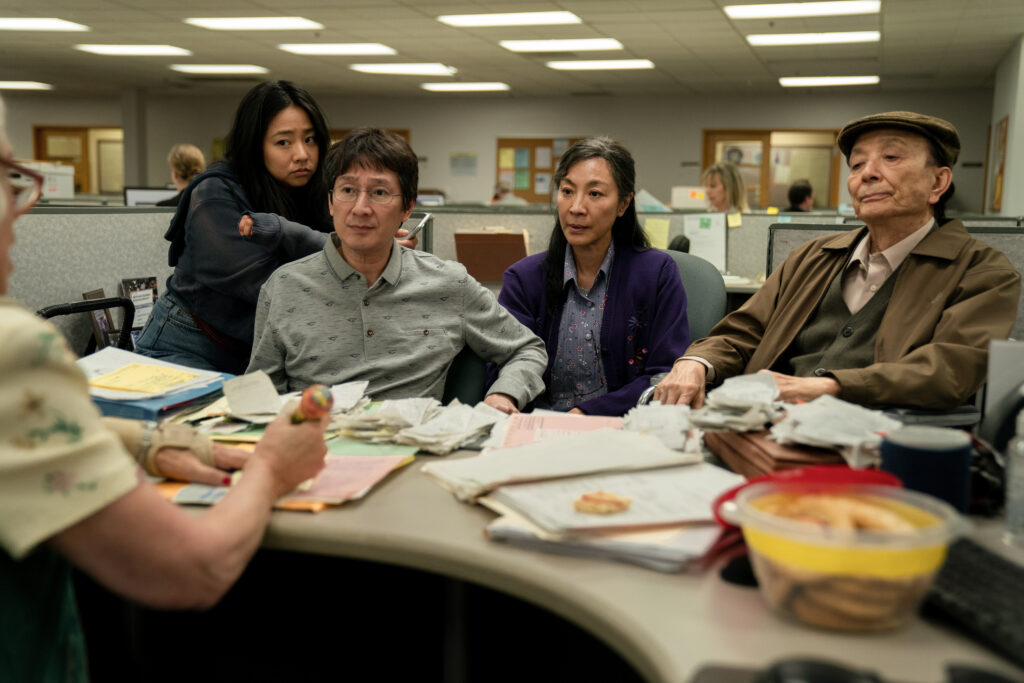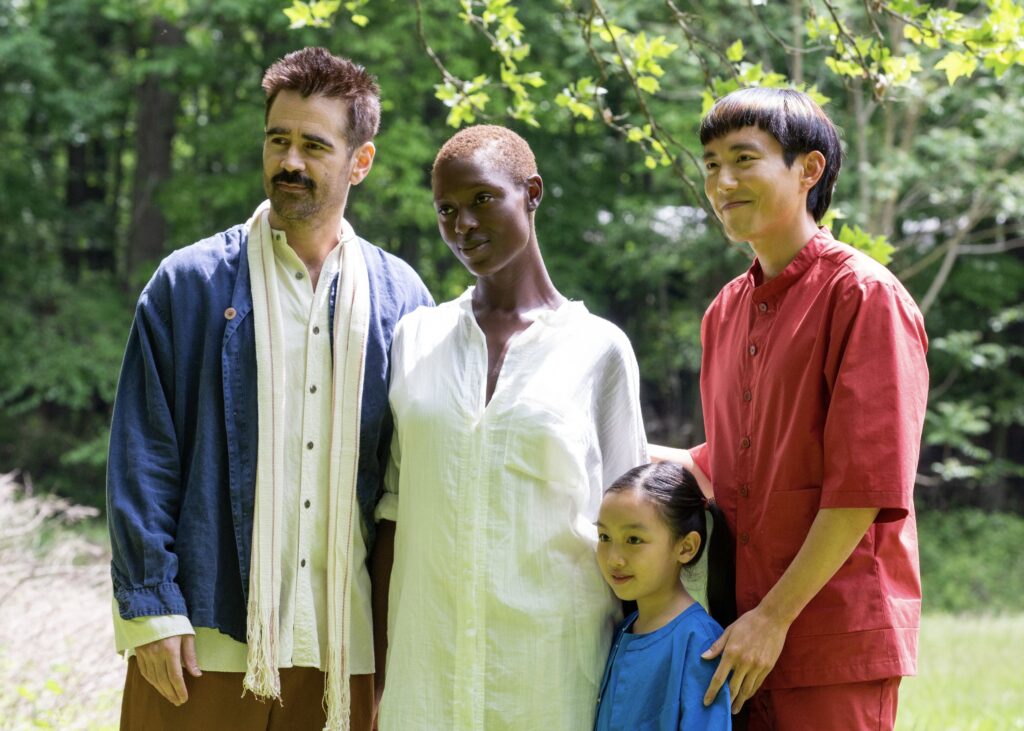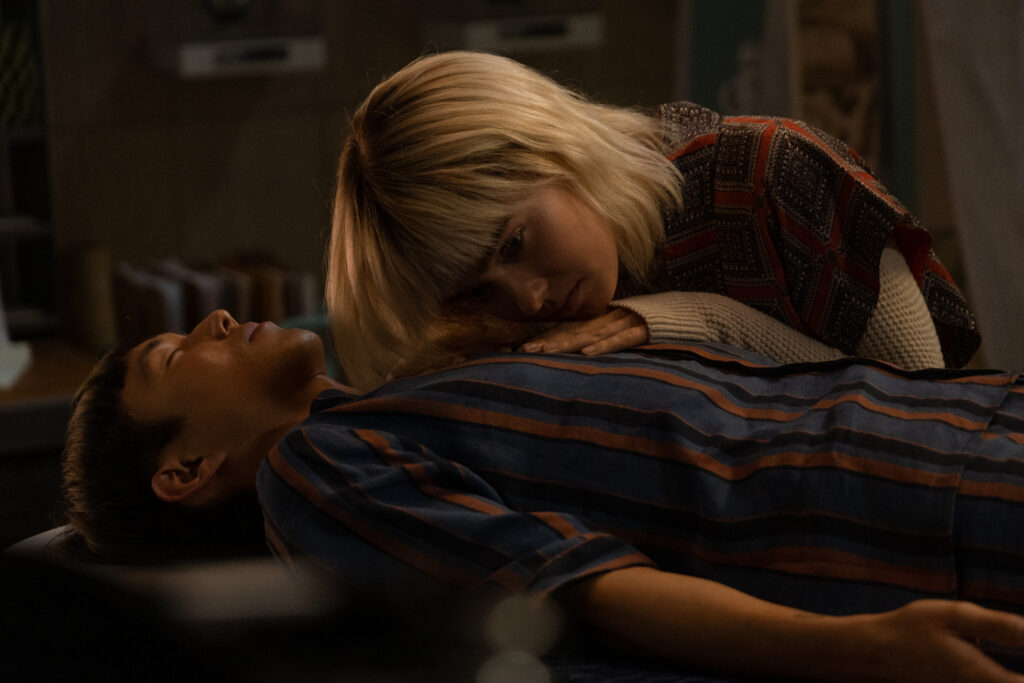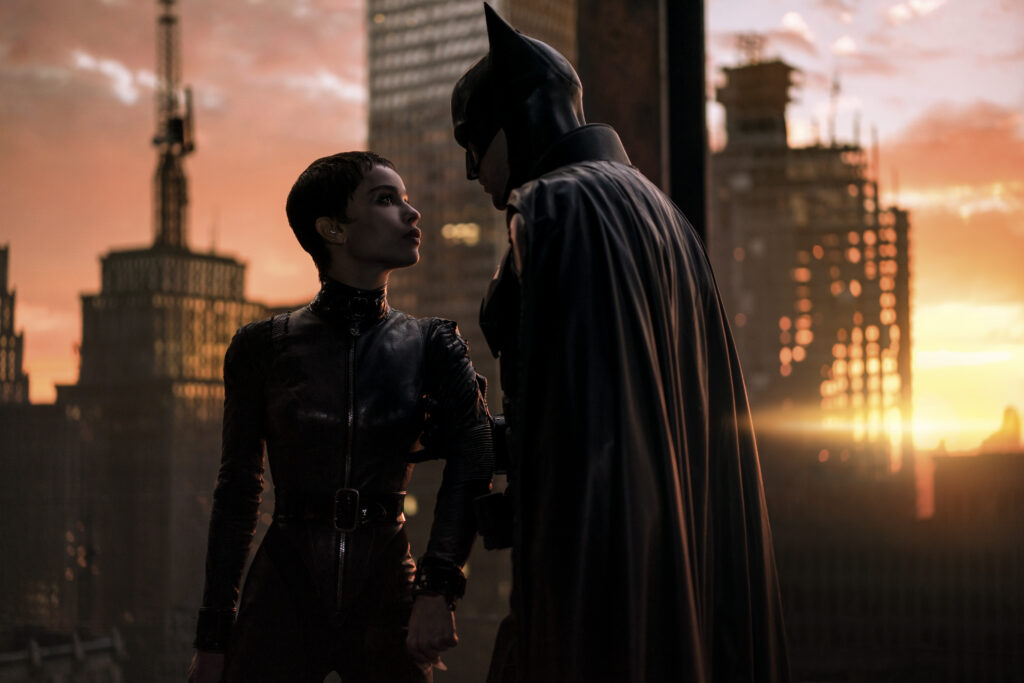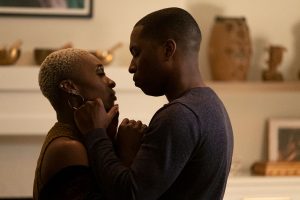July 5, 2022
by Carla Hay
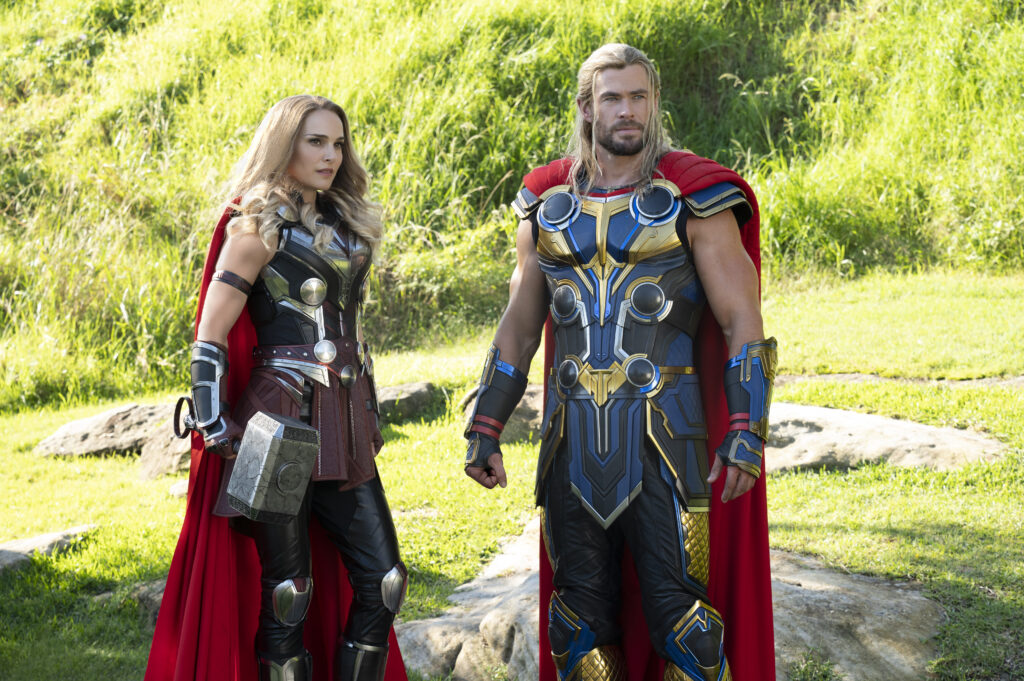
Directed by Taika Waititi
Culture Representation: Taking place on Earth and other parts of the universe (including the fictional location of New Asgard), the superhero action film “Thor: Love and Thunder” features a predominantly white cast of characters (with some African Americans, Latinos and Asians) representing the working-class, middle-class and wealthy.
Culture Clash: Nordic superhero Thor Odinson, also known as the God of Thunder, teams up with allies in a battle against the revengeful villain Gorr the God Butcher, while Thor’s ex-girlfriend Jane Porter has her own personal battle with Stage 4 cancer.
Culture Audience: Besides appealing to the obvious target audience of comic book movie fans, “Thor: Love and Thunder” will appeal primarily to people who are fans of the movie’s headliners and action movies that skillfully blend drama and comedy.

“Thor: Love and Thunder” could also be called “Thor: Grief and Comedy,” because how of this superhero movie sequel balances these two themes with some results that are better than others. The movie goes big on showing bittersweet romance and the power of true friendships. Some of the movie’s subplots clutter up the movie, and any sense of terrifying danger is constantly undercut by all the wisecracking, but “Thor: Love and Thunder” gleefully leans into the idea that a superhero leader can be a formidable warrior, as well as a big goofball and a sentimental romantic.
Directed by Taika Waititi, “Thor: Love and Thunder” is also a commercial showcase for Guns N’Roses music. It’s the first Marvel Studios movie to blatantly shill for a rock band to the point where not only are four of the band’s hits prominently used in major scenes in the movie, but there’s also a character in the movie who wants to change his first name to be the same as the first name of the band’s lead singer. The music is well-placed, in terms of conveying the intended emotions, but viewers’ reactions to this movie’s fan worship of Guns N’Roses will vary, depending on how people feel about the band and its music. The Guns N’Roses songs “Welcome the Jungle,” “Paradise City,” “Sweet Child O’ Mine” and “November Rain” are all in pivotal scenes in “Thor: Love and Thunder.”
“Thor: Love and Thunder” picks up where 2019’s blockbuster “Avengers: Endgame” concluded. What’s great about “Thor: Love and Thunder” (which Waititi co-wrote with Jennifer Kaytin Robinson) is that the filmmakers didn’t assume that everyone watching the movie is an aficionado of the Marvel Cinematic Universe (MCU), nor did they assume that everyone watching “Thor: Love and Thunder” will know a lot about the Nordic superhero Thor Odinson (played by Chris Hemsworth) before seeing the movie. Near the beginning of the movie, there’s a montage summary (narrated cheerfully by Waititi’s Korg character, a rock-like humanoid who is one of Thor’s loyal allies) that shows the entire MCU history of Thor up until what’s about to happen in “Thor: Love and Thunder.”
The movie’s opening scene isn’t quite so upbeat, because it gets right into showing that grief will be one of the film’s biggest themes. In a very barren desert, a man and his daughter (who’s about 8 or 9 years old, played by India Rose Hemsworth) are deyhdrated, starving, and close to dying. The girl doesn’t survive, and the man is shown grieving at the place where he has buried her. Viewers soon find out that this man is Gorr the God Butcher (played by Christian Bale), who is the story’s chief villain. But he didn’t start out as a villain.
After the death of his daughter, a ravenously hungry Gorr ends up a tropical-looking, plant-filled area, where he devours some fruit. Suddenly, a male god appears before Gorr, who is pious and grateful for being in this god’s presence. Gorr tells the god: “I am Gorr, the last of your disciples. We never lost our faith in you.”
The god scoffs at Gorr’s devotion and says, “There’s no eternal reward for you. There’ll be more followers to replace you.” Feeling betrayed, Gorr replies, “You are no god! I renounce you!” The god points to a slain warrior on the ground and tells Gorr that the warrior was killed for the Necrosword, a magical sword that can kill gods and celestials. The Necrosword levitates off of the ground and gravitates toward Gorr.
The god tells Gorr: “The sword chose you. You are now cursed.” Gorr replies, “It doesn’t feel like a curse. It feels like a promise. So this is my vow: All gods will die!” And you know what that means: Gorr kills the god in front of him, and Thor will be one of Gorr’s targets.
Meanwhile, Thor is seen coming to the rescue of the Guardians of the Galaxy, who need his help in battling some villains on a generic-looking planet in outer space. All of the Guardians are there (except for Gamora, who died at the end of “Avengers: Endgame”), and they see Thor as a powerful ally. However, the Guardians are worried that Thor has lost a lot of his emotional vitality. Thor (who hails from Asgar) is grieving over the loss his entire family to death and destruction.
Thor is also still heartbroken over the end of his romantic relationship with brilliant astrophysicist Jane Foster (played by Natalie Portman), who was in 2011’s “Thor” and 2013’s “Thor: The Dark World.” Viewers will find out in a “Thor: Love and Thunder” flashback montage what really happened that caused the end of this relationship. Jane and Thor are considered soul mates, but their devotion to their respective work resulted in Thor and Jane drifting apart.
Guardians of the Galaxy leader Peter Quill, also known as Star-Lord (played by Chris Pratt), tries to give Thor a pep talk, because Star-Lord can relate to losing the love of his life (Gamora, played by Zoe Saldana), but the main difference is that Thor has a chance to see Jane again because she’s still alive. As shown in the trailer for “Thor: Love and Thunder,” Jane will soon come back into Thor’s life in an unexpected way, when she gains possession of Thor’s magical hammer, Mjolnir, and she reinvents herself as the Mighty Thor. As an example of some of the movie’s offbeat comedy, Korg keeps getting Jane Foster’s name wrong, by sometimes calling her Jane Fonda or Jodie Foster.
The Guardians of the Galaxy section of “Thor: Love and Thunder” almost feels like a completely separate short film that was dropped into the movie. After an intriguing opening scene with Gorr, viewers are left wondering when Gorr is going to show up again. Instead, there’s a fairly long stretch of the movie with Thor and the Guardians of the Galaxy
After spending a lot of meditative time lounging around in a robe, Thor literally throws off the robe for the battle scene with Thor and the Guardians of the Galaxy, as the Guns N’Roses song “Welcome to the Jungle” blares on the soundtrack. After the battle is over (it’s easy to predict who the victors are), Thor’s confident ego seems to have come roaring back. He exclaims with a huge grin: “What a classic Thor adventure! Hurrah!”
As a gift for this victory, Thor gets two superpowered goats, which have the strength to pull space vessels and whose goat screaming becomes a running gag in the movie. The visual effects in “Thor: Love and Thunder” get the job done well enough for a superhero movie. But are these visual effects groundbreaking or outstanding? No.
The Guardians’ personalities are all the same: Star-Lord is still cocky on the outside but deeply insecure on the inside. Drax (played by Dave Bautista) is still simple-minded. Rocket (voice by Bradley Cooper) is still sarcastic. Mantis (played by Pom Klementieff) is still sweetly earnest. Groot (voiced by Vin Diesel) still only has three words in his vocabulary: “I am Groot.”
Nebula (voiced by Karen Gillan), who is Garmora’s hot-tempered adopted sister and a longtime Guardians frenemy, is now an ally of the Guardians. Guardians associate Kraglin Obfonteri (played by Sean Gunn) makes a brief appearance to announce that he’s gotten married to an Indigarrian woman named Glenda (played by Brenda Satchwell), who is one of his growing number of his wives. It’s mentioned in a joking manner that Kraglin has a tendency to marry someone at every planet he visits.
With his confidence renewed as the God of Thunder, Thor decides he’s ready to end his “retirement” and go back into being a superhero. He says goodbye to the Guardians, who fly off in their spaceship and wish him well. Little does Thor know what he’s going to see someone from his past (Jane), whom he hasn’t seen in a long time.
Sif (played by Jaimie Alexander), an Asgardian warrior who was in the first “Thor” movie and in “Thor: The Dark World,” re-appears in “Thor: Love and Thunder,” but she now has a missing left arm and has to learn to re-adjust her fighting skills. Sif’s presence in this movie isn’t entirely unexpected. It’s a welcome return, but some viewers might think that Sif doesn’t get enough screen time.
Meanwhile, as shown in “Avengers: Endgame,” Thor gave up his King of New Asgard title to his longtime associate Valkyrie (played by Tessa Thompson), who’s finding out that being the leader of New Asgard isn’t quite as enjoyable as she thought it would be. She’d rather do battle alongside her buddy Thor instead of having to do things like attend dull council meetings or cut ribbons at opening ceremonies. New Asgard is a fishing village that has become a tourist destination that plays up its connection to Thor and his history.
The stage play recreation of Thor’s story was used as a comedic gag in 2017’s “Thor: Ragnarok” (also directed and written by Waititi), and that gag is used again in “Thor: Love and Thunder,” as this play is staged in New Asgard, but with an update to include what happened in “Thor: Ragnarok.” Making uncredited cameos as these stage play actors in “Thor: Love and Thunder” are Matt Damon as stage play Loki (Thor’s mischievous adopted brother), Luke Hemsworth as stage play Thor, Melissa McCarthy as stage play Hela (Thor’s villainous older sister) and Sam Neill as stage play Odin (Thor’s father). This comedic bit about a “Thor” stage play isn’t as fresh as it was in “Thor: Ragnarok,” but it’s still amusing.
One of the New Asgard citizens is a lively child of about 13 or 14 years old. His name is Astrid, and he announces that he wants to change his first name to Axl, in tribute to Axl Rose, the lead singer of Guns N’Roses. Axl (played by Kieron L. Dyer) is the son of Heimdall (played by Idris Elba), the Asgardian gatekeeper who was killed by supervillain Thanos in 2018’s “Avengers: Infinity War.” As fans of superhero movies know, just because a character is killed on screen doesn’t mean that that character will never be seen again. And let’s just say that “Thor: Love and Thunder” makes it clear that people have not seen the last of Heimdall.
Jane has a poignant storyline because she has Stage 4 cancer, which is something that she’s in deep denial about since she wants to act as if she still has the same physical strength as she did before her cancer reached this stage. Jane’s concerned and loyal assistant Darcy Lewis (played by Kat Dennings) makes a brief appearance to essentially advise Jane to slow down Jane’s workload. Jane refuses to take this advice.
The way that Jane gets Thor’s hammer isn’t very innovative, but she finds out that the hammer gives her godlike strength and makes her look healthy. It’s no wonder she wants to explore life as the Mighty Thor. (Her transformation also includes going from being a brunette as Jane to being a blonde as the Mighty Thor.)
And where exactly is Gorr? He now looks like a powder-white Nosferatu-like villain, as he ends up wreaking havoc by going on a killing spree of the universe’s gods. And it’s only a matter of time before Gorr reaches New Asgard. With the help of shadow monsters, Gorr ends up kidnapping the children of New Asgard (including Axl) and imprisoning them in an underground area. Guess who’s teaming up to come to the rescue?
After the mass kidnapping happens, there’s a comedic segment where Thor ends up in the kingdom of Greek god Zeus (played by Russell Crowe), a toga-wearing hedonist who says things like, “Where are we going to have this year’s orgy?” Zeus is Thor’s idol, but Thor gets a rude awakening about Zeus. Thor experiences some humiliation that involves Thor getting completely naked in Zeus’ public court. Crowe’s questionable Greek accent (which often sounds more Italian than Greek) is part of his deliberately campy performance as Zeus.
“Thor: Love and Thunder” packs in a lot of issues and switches tones so many times, it might be a turnoff to some viewers who just want to see a straightforward, uncomplicated and conventional superhero story. However, people who saw and enjoyed “Thor: Ragnarok” will be better-prepared for his mashup of styles that Waititi continues in “Thor: Love and Thunder,” which has that same spirit. “Thor: Love and Thunder” tackles much heavier issues though, such as terminal illness and crushing heartbreak.
The movie’s cancer storyline with Jane could have been mishandled, but it’s written in a way that has an emotional authenticity among the fantastical superhero shenanigans. “Thor: Love and Thunder” also goes does fairly deep in exposing the toll that superhero duties can take on these superheroes’ love lives. Thor and Jane have to come to terms with certain decisions they made that affected their relationship.
The movie also provides a glimpse into the personal lives of supporting characters Korg and Valkyrie. In a memorable scene, Valkyrie and Korg are alone together in an area of Thor’s Viking ship, and they have a heart-to-heart talk about not finding their true loves yet. They are lovelorn cynics but still show some glimmers of optimism that maybe they will be lucky in love. It’s in this scene where Korg mentions that he was raised by two fathers, and Valkyrie briefly mentions having an ex-girlfriend. A scene later in the movie shows that Korg is open having a same-sex romance.
All of the cast members do well in their roles, but Hemsworth and Portman have the performances and storyline that people will be talking about the most for “Thor: Love and Thunder.” The ups and downs of Thor and Jane’s on-again/off-again romance are not only about what true love can mean in this relationship but also touch on issues of power, control, trust and gender dynamics. It’s a movie that acknowledges that two people might be right for each other, but the timing also has to be right for the relationship to thrive.
Bale does a very solid job as Gorr, but some viewers might be disappointed that Gorr isn’t in the movie as much as expected. That’s because the first third of “Thor: Love and Thunder” is taken up by a lot of Guardians of the Galaxy interactions with Thor. In other words, Gorr’s villain presence in “Thor: Love and Thunder” is not particularly encompassing, as Hela’s villain presence was in “Thor: Ragnarok.”
The movie’s final battle scene might also be somewhat divisive with viewers because one member of Thor’s team is not part of this battle, due to this character being injured in a previous fight and being stuck at a hospital. Fans of this character will no doubt feel a huge letdown that this character is sidelined in a crucial final battle. Leaving this character out of this battle is one of the flaws of “Thor: Love and Thunder.”
The mid-credits scene and end-credits scene in Thor: Love and Thunder” show characters who are supposed to be dead. The mid-credits scene also introduces the family member of one of the movie’s characters, while the end-credits scene teases the return of other characters who exist in another realm. Neither of these scenes is mind-blowing. However, they’re worth watching for MCU completists and anyone who likes watching all of a movie’s credits at the end.
What “Thor: Love and Thunder” gets right is that it shows more concern than many other MCU movies about how insecurities and isolation outside the glory of superhero battles can have a profound effect on these heroes. Saving the universe can come at a heavy emotional price, especially when loved ones die. Whether the love is for family members, romantic partners or friends, “Thor: Love and Thunder” acknowledges that love can result in grief that isn’t easy to overcome, but the healing process is helped with loyal support and some welcome laughter.
Disney’s Marvel Studios will release “Thor: Love and Thunder” in U.S. cinemas on July 8, 2022.


